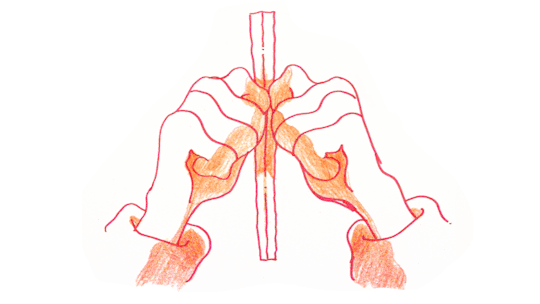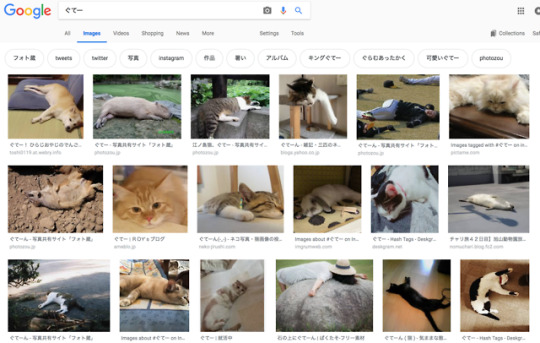A langblr to track and share my study progress Midori ~ WaniKani lvl 31 ~ Currently working towards N3 ~ Slightly obsessed with making lists
Don't wanna be here? Send us removal request.
Text
kanji seems scary but it helps so much with understanding things. in my lesson last night i struggled with some of the practice questions because a lot of words i was used to reading in kanji were written in hiragana and i was just like ???? i stg i've never seen these words in my life. but then my teacher wrote the kanji and i was like OH YEAH NO I HAVE LEARNED THESE WORDS.
#me looking back at N5 stuff like#do I know this?? should I know this?? oh. wait#kanji is so helpful considering how many words have the same pronunciation
114 notes
·
View notes
Text


Japanese homework. I don't really understand these ones at all 😅 Can anyone help me with the grammar here?
63 notes
·
View notes
Text
思う存分
おもうぞんぶん
to one's heart's content
私たちは休暇を思う存分楽しんでいた。 わたしたち は きゅうか を おもうぞんぶん たのしんで いた。 We enjoyed our holidays to the fullest.

111 notes
·
View notes
Text
Credit to @japanese_with_josh
I found this really helpful to hear a real life situation- not just from a textbook!
687 notes
·
View notes
Text
「V〜方」と「V方法」の違いは何?
what’s the difference between 「V〜方」 and 「V方法」?

hi everyone! today i wanted to make a post explaining an intermediate grammar concept about the two different ways to say “way/method” with a verb in japanese! just as quick note, i won’t be glossing most of the kanji i use in this post, so be sure to use jisho or turn on rikaikun/chan if you need help reading. without further ado, 行こう!
V〜方(かた) = “how to V”
first, let’s learn how to add 〜方 to a verb:
start with plain present (dictionary) form
create 〜ます form
remove 〜ます and add 〜方
let’s try it with an ichidan verb (食べる) and a godan verb (作る).
食べる/作る
食べます/作ります
食べ方/作り方
easy, right? make sure you’re brushed up on your godan conjugation rules! now, how can we use these new forms?
first, it’s important to note that we’ve transformed the verb into a noun by adding 〜方. that means that instead of を, which attaches before verbs, V〜方 is often preceded by の.
❌ 石鹸(せっけん/soap)を作り方
⭕️ 石鹸(せっけん/soap)の作り方 = how to make soap
週末は石鹸の作り方をググって台所をひどく散らかしちゃった。 = this weekend so i googled how to make soap and made a huge mess of the kitchen.
in the above example, V〜方 refers to the actual, physical manner of doing something (in this case, making soap). you can think of it like an instruction manual or a recipe.
日本人の友達に箸の使い方を教えてもらった。 = i learned how to use chopsticks from my japanese friend.
卵の茹で方、わかってるの? = do you know how to boil eggs?
with する verbs, のし方 is used with the verbal noun. this means の is used twice in the phrase:
❌ 車の運転し方がわからない。
⭕️ 車の運転のし方がわからない。 = i don’t know how to drive a car.
pretty straightforward so far! let’s add one more thing to this topic: V〜方をする.
V〜方をする = “to V in a certain way”
this phrase is useful in describing the particular ways people perform certain actions. by using an adjective, ような, or a noun + の, you can characterize their V〜方.
林田先生は厳しい教え方をする。 = hayashida-sensei has a strict way of teaching.
誰にもわかるような書き方をした本だ。 = the book is written so anyone can understand it.
吉田くんは乱暴(らんぼう)な運転のし方をする。 = yoshida-kun has a reckless way of driving.
getting the hang of it? let’s move onto V方法 now.
V方法(ほうほう) = “a way to V”
V方法 gets a little less literal and a little more conceptual than V〜方. let’s look at how to form it.
start with plain present (dictionary) form
add 方法 to the end
that’s it—even easier than V〜方! in japanese, when you put a plain form verb before a noun, you’re kind of using that verb like an adjective; so this time, the whole phrase has become a noun phrase.
let’s see some examples of V方法:
毎日勉強することが試験に備える(そなえる)方法だと思っている人は多い。 = many people believe studying every day is the way to prepare for exams.
困難(こんなん)から逃げる方法はない場合もある。 = in some cases there is no way to escape hardship.
do you notice how the feeling here is less “instruction manual” and more “means to an end”? it’s a subtle difference, but it’s there. compare these two sentences:
この料理の食べ方は何?お箸で? = how do you eat this dish? with chopsticks?
健康を保って(たもって)食べる方法は何? = what’s a way to eat healthy?
the context for each is a little different, but the nuance of 食べ方 vs. 食べる方法 comes across clearly. the former addresses the physical manner in which a food item is eaten (see, for example, this article about okonomiyaki). the latter, on the other hand, refers to the concept of eating with a goal in mind (i.e., staying healthy). in a word, the difference is this: V〜方 implies a specific/correct way to perform an action, while V方法 expresses a method to attain some goal. make no mistake, there is some overlap between the two—but there may always be a slightly different feeling that comes with each.
and that’s that on that! just kidding, i’m sure there are way more resources out there on this topic, and it’s always a great idea to ask native speakers what they think. as always, feel free to shoot me an ask with any questions or let me know if you found any mistakes! お疲れ様 and またね!! 💮

sources:
dictionary of intermediate japanese grammar (日本語文法辞典中級編) by seiichi makino and michio tsutsui
how to use 方 by maggie sensei
some sentences adapted from jisho
113 notes
·
View notes
Text
Word of the day - 箱入り娘
はこいりむすめ
lit. 'girl in a box'
girl who has lived a sheltered life, naive girl

97 notes
·
View notes
Text
観覧
かんらん
viewing
お寺の宝物館を観覧する。 おてら の ほうもつかん を かんらん する。 I will view the temple's treasure hall.

93 notes
·
View notes
Text
Using みたいです to say ‘looks like’
みたいです follows a noun and expresses the idea that someone/ something looks like the person described by the noun.
Example- 私の友達は猫みたいです。- my friend looks/acts like a cat
みたいです can also follow a verb and expresses the idea that something appears to be the case.
Example- 雨が降ったみたいですね。- It looks like it has rained, doesn’t it?
160 notes
·
View notes
Text
Japanese Pronunciation Series #6 - Japanese Pitch Accent
Japanese Pronunciation Series #6 - Japanese Pitch Accent
What is Pitch Accent?
Pitch accent refers to a characteristic of language where every syllable can be pronounced with a high or low pitch. Pitch accent is considered different from the concepts of stress and tone that appear in English and Chinese, respectively.
English: Stress Chinese: Tones Japanese: Pitch
Pitch in the Japanese Language
Pitch accent varies widely from region to region in Japan. As Japan started to have contact with other countries in the Meiji period, they decided that a “standard language” needed to be established. The Japanese spoken in Tokyo is now known as “standard Japanese,” or hyōjun-go (標準語) in Japanese. The examples of pitch accent provided below are based on “standard Japanese.”
About Pitch Accent
Some assert that English has over 30,000 syllabic sounds. In contrast, Japanese has only 111 (112, according to some linguists). In other words, there are very few “sounds” in Japanese, and as a result, there are many homophones (i.e., words that are spelled the same but have different meanings). These homophones can be confusing. In written language, it is easy to tell the difference between homophones if kanji characters are used. In speech, we use pitch accent in order to differentiate between homophones to avoid misunderstandings.
Example:

Characteristics of Japanese Pitch Accent
■ There are only two levels of pitch - high and low.
■ Pitch does not change in the middle of a syllable. In Chinese, there are tones that go from low to high or high to low in the middle of a syllable. This does not occur in Japanese.
■ First and second syllables cannot be the same pitch. If the first syllable is high, then the second one must be low. If the first syllable is low, then the second one must be high.
Example:

In this example, the pitch changes from the first syllable to the second. These two syllables cannot be the same pitch.
■ We cannot use high pitch more than once in the same word. In other words, once the pitch falls, it cannot go back up again.
For Example: The pronunciation [ mi↑tsu↓bishi ] cannot be [ mi↑tsu↓bi↑shi ], [ mi↓tsu↑bi↓shi ], or [ mi↓tsubi↑shi ].
■ The pitch of a word can change depending on what comes after it.
For Example: [ ka↓nada ] [ ka ↑ nadajin ] (Canada) (Canadian person)
Why we should learn about Pitch Accent
So why is it important to learn about pitch accent in Japanese? Here are a couple of important reasons.
Reason #1: To be able to tell the difference between homophones
For Example:

Reason #2: To be able to tell where a word starts
For Example: The word niwatori (にわとり) could mean “chicken” or “two birds.”
[ ni↑ watori ] = “chicken” [ ni↓ wa ] = “two” (counter for birds) [ to↑ ri ] = “bird”
If it is pronounced as [ ni↓ wa to↑ ri] the listener knows that this is two words, since once the pitch falls it never goes up in the same word.
On the other hand, the pronunciation [ ni↑ watori ] indicates that it is one word. If tori were a separate word, the pitch of to and ri would be different because first and second syllables cannot be the same pitch.
3K notes
·
View notes
Text
WaniKani Update:
I haven't had the motivation to touch my WaniKani reviews in weeks, but I finally managed to sit down for a couple review sessions. I had almost 350 reviews piled up 😅 I got through 100 reviews each time but my % correct are a bit disheartening like 50-55% lol. How do y'all stay motivated when you come back to studying after a break and feel like you suck? 😭
Anyway, I'm hoping to get back to lessons once I get my reviews manageable!
8 notes
·
View notes
Photo

When you don’t know what the word means but Google Images has you covered
ぐてー (I guess it means ‘sprawled out’, mostly for animals)
#japanese onomatopoeia#japanese#japanese vocabulary#japanese language#japanese langblr#japanese vocab#japanese studyblr
244 notes
·
View notes
Text

#this is a great explanation!!#japanese grammar#japanese#日本語#learning japanese#grammar#japanese langblr#japanese language
280 notes
·
View notes
Text
I really enjoyed Midnight Diner: Tokyo Stories! Although it was technically season 4? of Midnight Diner but I don’t think it was directly connected to the original 3 seasons.
For something more lighthearted, Samurai Gourmet is cute! I’ve only watched a few episodes but definitely wanna finish it!
Yuru Camp is originally an anime but got a live-action adaptation if you’re interested in a slice of life camping show. Haven’t watched it myself but love the anime and heard the live-action stays pretty true to the original.
Japanese live-action TV shows?
Does anyone know of any good live-action Japanese TV shows I should check out? J-Dramas? Sometimes I’m not in the mood to watch anime, but I still want to consume Japanese while I’m watching TV. Please respond with your recommendations if you have any! 🤞
#japanese langblr#langblr#recommendation#japanese shows#Japanese show recs#yuru camp#Japanese#japanese tv#japanese studyblr#self study japanese#learn japanese#japanese language
114 notes
·
View notes
Photo

Did you know there are 2 type of sleep in Japanese words?
For sleeping as in “go to bed/lying down to take a nap”, it is 寝る (Neru). And the opposite is 起きる (Okiru), which means to get up from the lie down posture).
For sleeping as in “you’re in train/classroom and fell asleep” (not necessarily lying down), it is 眠る (Nemuru). So to wake up someone who’s sleeping on a train, you will need to use 目覚める (Mezameru), which means to open their eyes and be sober.
The key here is in the posture! :D But sometimes they are also interchangeable. One thing to note though, when you’re talking about “What time do you go to sleep at night?” or anything similar, you always use 寝る (Neru).
#I always wondered about the difference between these#but never got around to looking it up#this makes a lot of sense#japanese vocab#Japanese#vocab#Japanese langblr
4K notes
·
View notes
Note
Can you tell me if there's a difference between もらう, 受ける and 受け取る in terms of their usage?
I actually had to ask my sensei on this one because I wasn’t sure of the nuances.
I’ve always understood もらう as receiving a favor that someone’s done for you or receiving an item from someone. ~てもらう, means you are receiving a favor from someone.
Kanji: 私は彼氏にバラをもらいました。Kana: わたしはかれしにバラをもらいました。I received roses from my boyfriend.
Kanji: 私は友達に料理してもらいました。Kana: わたしはともだちにりょうりしてもらいました。My friend cooked for me. (I am receiving my friend’s favor of cooking for me).
受ける means to take, to receive, to get. It means to receive something, and leads to some kind of action, effect, reaction, emotional response, feeling, etc. The item being received is not so much a physical item but rather something intangible or something you experience or hear (e.g. information, news, some situation, etc.). My teacher said it’s used often in the education field.
Kanji: 試験を受けます。Kana: しけんをうけます。I took an exam.
Kanji: ニュースを受ける時、本当にびっくりしました。Kana: ニュースをうけるとき、ほんとうにびっくりしました。When I got the news, I was really surprised.
Kanji: 彼は正式な教育を受けることがないけど、とても頭がいいです。Kana: かれはせいしきなきょういくをうけることがない、とてもあたまがいいです。Although he’s never received a formal education, he’s really smart.
This is one of my sensei’s examples:
Kanji: たけしさんは、アメリカで、人種差別を受けました。Kana: たけしさんは、アメリカで、じんしゅさべつをうけました。Takeshi received/experienced racial discrimination in America.
受け取る I’ve always understood to mean “accept” as in accepting an item. Like in a game I play, if a gift is left for me, there’s a button that says 受け取る。”Accept (this item/gift).” My sensei said, in this case, unlike もらう, you are not receiving a favor or a service from anyone.
Kanji: 空港で彼氏が買ったバラを受け取りました。Kana: くうこうでかれしがかったバラをうけとりました。I accepted the roses my boyfriend bought at the airport.
Kanji: 私が遊ぶゲームでよくプレゼントを受け取ります。Kana: わたしがあそぶゲームでよくプレゼントをうけとります。I often accept presents in that game I play.
I hope this helps you a lot! Special thanks and credit to Kozasa-sensei for helping me on this one. ^^
頑張って、アノニマスさん!質問ありが���う。
#japanese#Japanese grammar#japanese langblr#this is super helpful#giving and receiving grammar can be really confusing
202 notes
·
View notes
Text
レストランで
At a Restaurant (in Japanese) - JLPT N3

単語・Vocabulary
外食をする がいしょくをする to eat out
お昼を食べる/昼食をとる/ランチを食べる おひるをたべる/ちゅうしょくをとる/ランチをたべる to have lunch
食事 しょくじ meal
家族そろって かぞくそろって together as a family
子どもを連れる こどもをつれる to take your child with you
子ども連れ こどもづれ customers with children
雰囲気のいいレストラン ふんいきのいいレストラン a restaurant with a nice atmosphere
満席 まんせき no seats (full house)
すいている seats available
列に並ぶ れつにならぶ stand in line
行列ができる ぎょうれつができる people line up
禁煙席 きんえんせき non-smoking seating
喫煙席 きつえんせき smoking section seating
ウエーター waiter
ウエートレス waitress
ウエートレスにおすすめを聞く ウエートレスにおすすめをきく to ask the waitress for a recommendation
量が多い りょうがおおい large portion
量が少ない りょうがすくない small portion
注文が決まる ちゅうもんがきまる to decide on what to order
注文する ちゅうもんする to place an order
注文を取る/注文を受ける ちゅうもんをとる/ちゅうもんをうける to take an order
デザートを追加する デザートをついかする to place an additional order of desserts
おかわり refill
無料(むりょう)/ただ free, no charge
食器を下げる しょっきをさげる to take the plates away
料理を残す りょうりをのこす to leave food on one's plate
もったいない wasteful
例文・Example Sentences
いらっしゃいませ Welcome
お客様は何名様ですか。 おきゃくさまはなんめいさまですか。 How many people are in your party?
2人です。 ふたりです。 There are two people (in the party).
申し訳ありません。 もうしわけありません。 I am very sorry.
もう少々お待ちください。 もうしょうしょうおまちください。 Please wait a little longer.
お待たせいたしました。 おまたせいたしました。 I'm sorry for the wait.
ご注文はお決まりですか。 ごちゅうもんはおきまりですか。 Have you decided on your order?
今日のおすすめは何ですか。 きょうのおすすめはなんですか。 What are today's specialties (recommendations)?
もう1時です。お昼にしましょう。 もういちじです。おひるにしましょう。 It's already 1 pm. Let's have lunch.
家族全員そろって食事に出かけた。 かぞくぜんいんそろってしょくじにでかけた。 We went out to eat together as a family.
すごく長い列だね。あんなに並んで��るということはおいしいのかな。 すごくながいれつだね。あんなにならんでいるというのはおいしいのかな。 That line is so long, isn't it? If that many people are lining up it seems like it must be delicious.
食器をおさげしてよろしいですか��� しょっきをおさげしてよろしいですか。 May I clear away your plates?
417 notes
·
View notes
Text
The Senses in Japanese

感覚 かんかく sense
感じる かんじる to sense, to feel
五感 ごかん the five senses
触覚 しょっかく sense of touch
感触 かんしょく touch
触る さわる to touch
視覚 しかく sense of sight
視力 しりょく sight
見る みる to see
聴覚 ちょうかく sense of hearing
聴力 ちょうりょく hearing
聞く きく to hear
嗅覚 きゅうかく sense of smell
匂い におい smell
嗅ぐ かぐ to smell
味覚 みかく sense of taste
味 あじ taste
味わう あじわう to taste
八識 はっしき eight consciousnesses (the five senses, consciousness of the mind, self-consciousness and store consciousness) - Buddhism
337 notes
·
View notes